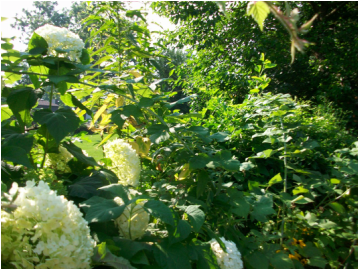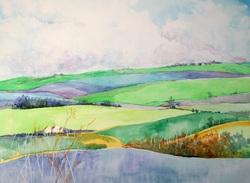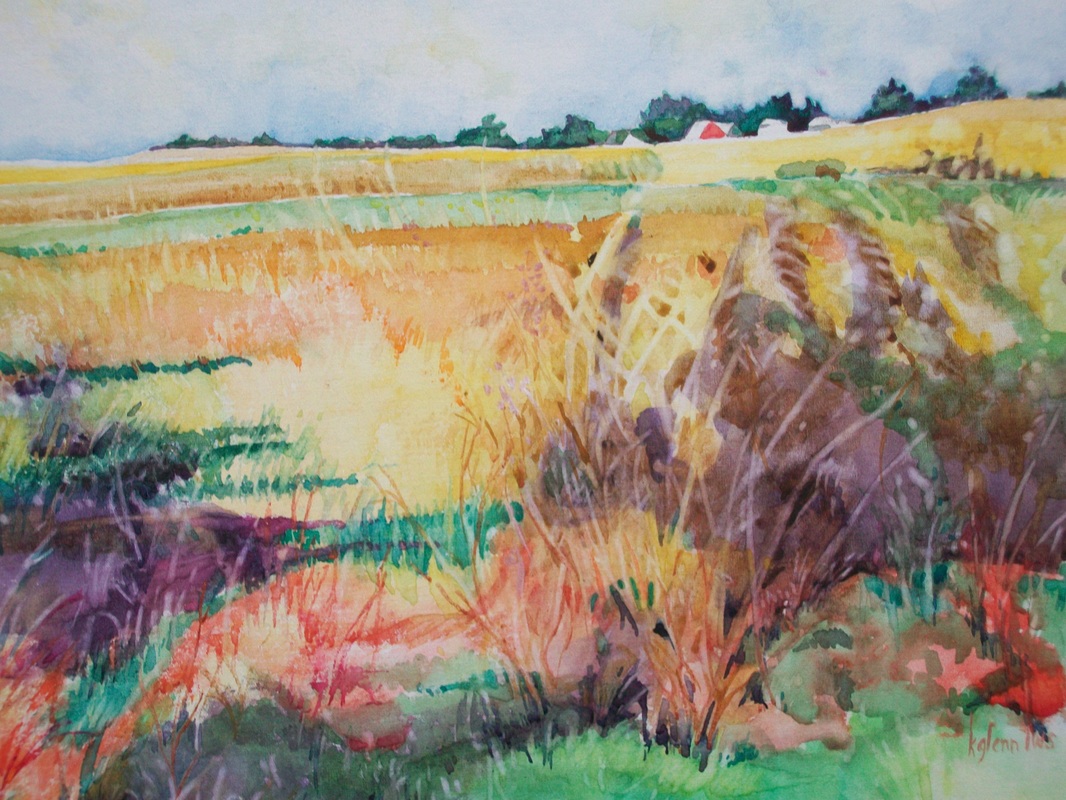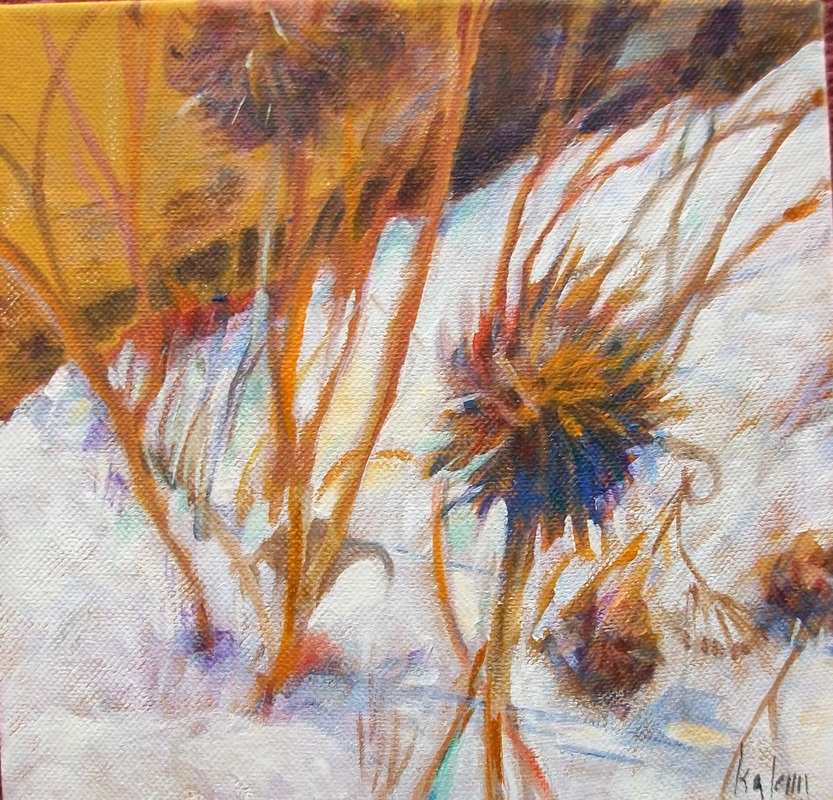One of the most important tools an artist can use to make a painting interesting is the use of contrasts. Such things as light versus dark, straight lines against curves, textured against smooth and, of course, complementary colors.
But in recent years, we are able to use the contrast of transparency versus opacity. At one time it was considered a nono to add an opaque color to a transparent watercolor. In fact, some major watercolor societies still adhere to the rule of using only transparent watercolor.
I'm not sure who was the first to break this 'rule' but I do know the first I was introduced to the concept was in a workshop with Stephen Quiller. He worked in watercolor media, including traditional transparent, casein, acrylic and gouache - often in the same painting.
A watercolorist in the past might have used a white gouache to correct a mistake and then paint over with a watercolor. What happened? Well, the eye immediately went right to the correction. It was the mark of inexperience.
So what happens when the painter uses contrast in a composition? The eye is directed to that spot. You know, the bright spot of red on a flower next to green florals. Or, the shaft of sun creating the lightest light in a dark still life.
And somewhere along the line, someone discovered that the eye could be led to the point of interest or create interest in contrasting opaque with transparency.
And this is one of the things we are going to be discovering by using transparent paints and gouache. And, oh yes, we will be exploring more color along with this. And, of course, we will have fun experimenting!





 RSS Feed
RSS Feed